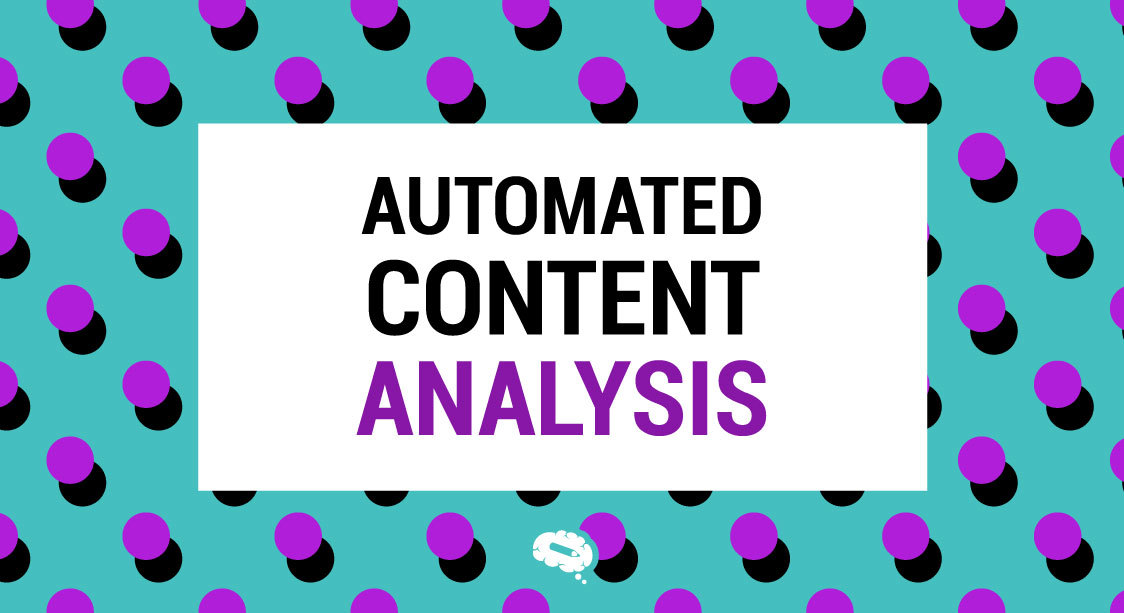In the domain of data analysis, the meticulous understanding and application of levels of measurement represent a cornerstone in the quest for precision and reliability. This comprehensive guide aims to shed light on the fundamental ways to measure data and their significance in scientific analysis.
In this overview, you’ll navigate through four principal types of measurement: nominal, ordinal, interval, and ratio scales, each playing a crucial role in interpreting and understanding data.
Definition Of Levels Of Measurement
Levels of measurement categorize data according to their characteristics and the mathematical operations permissible for analysis. The hierarchy encompasses four primary types: nominal, ordinal, interval, and ratio. Each level holds distinct attributes defining the nature and scope of quantitative assessment.
Significance Of Levels Of Measurement In Data Analysis
Understanding levels of measurement is pivotal in interpreting and analyzing data accurately. These levels dictate the statistical operations applicable to the data, influencing the choice of analytical methods and the depth of insights extracted from the information.
Understanding The Different Types Of Measurement Scales
At the foundational level, nominal measurement classifies data into separate categories or labels without inherent order or quantitative significance. As we advance to ordinal measurement, data assumes a ranked or ordered structure, allowing for comparative analysis but without precise intervals. Moving beyond, interval and ratio measurements offer heightened precision and quantitative scales, enabling rigorous comparisons and intricate calculations.
Nominal Level Of Measurement
The nominal level of measurement forms the bedrock of categorical classification within data analysis. Unlike other measurement levels, nominal measurement involves grouping data into distinct categories or labels without an inherent order or numerical value.
Explanation Of Nominal Measurement
Nominal measurement focuses on classifying data into discrete groups or categories, assigning labels without implying any quantitative significance or order among the categories. It establishes a framework for differentiating between groups without indicating magnitude or value distinctions.
Examples And Applications Of Nominal Measurement
Nominal measurement finds widespread application across diverse fields, providing a categorical framework for data classification. Its utility spans beyond demographic data and research surveys to various practical scenarios.
- Demographic Data: Within demographic studies, nominal measurement extensively categorizes attributes such as gender (male/female), marital status (single/married/divorced/widowed), or racial classifications (Caucasian/African American/Asian/Hispanic) without implying any inherent order.
- Educational and Professional Qualifications: Nominal measurement categorizes educational achievements, including degrees attained (high school/college/graduate) or professional affiliations (certified/public/private sectors).
- Categorization in Business and Marketing: Market segmentation utilizes nominal measurement to classify consumer preferences into distinct groups, such as product preferences (electronics/clothing/food) or brand loyalty (Brand A/Brand B/Brand C).
- Survey and Opinion Classification: Research surveys employ nominal measurement to classify opinions or responses, categorizing choices into “Agree,” “Disagree,” “Neutral,” or “Strongly Agree” and “Strongly Disagree,” providing structured responses without implying a hierarchy among choices.
- Geographical Classifications: Nominal measurement categorizes geographic locations, such as continents (Asia/Africa/Europe), countries (USA/Canada/UK), or cities without any inherent sequence or order.
- Medical Diagnosis and Classifications: In healthcare, nominal measurement classifies medical conditions or diagnoses (e.g., diabetes, hypertension) into discrete categories for diagnostic purposes without implying any order.
- Legal and Criminal Classifications: Within legal contexts, nominal measurement categorizes offenses or crime classifications (e.g., misdemeanor/felony) without indicating any inherent level of severity.
Nominal measurement’s versatility in categorizing discrete attributes across multifaceted domains underscores its importance as a fundamental tool for classification and structured data organization in numerous fields.
Advantages And Limitations Of Nominal Measurement
Let’s delve deeper into the advantages and limitations of nominal measurement:
Advantages
- Nominal measurement’s straightforward nature makes it easily understandable and implementable across diverse datasets. Its simplicity allows researchers and analysts to swiftly categorize data without the need for complex computations or interpretations.
- Its broad applicability extends across various fields and disciplines, facilitating uncomplicated categorization of qualitative attributes. Nominal measurement serves as a foundational tool in sociology, psychology, market research, and other social sciences, enabling structured data organization.
- Nominal measurement aids in organizing and differentiating between distinct groups or categories, fostering clear demarcation without implying any inherent order. This classification assists in creating meaningful distinctions among categorical data sets.
- Despite lacking numerical significance, nominal measurement allows for comparison and identification of group frequencies or distributions. It enables researchers to discern patterns, frequencies, or associations within categorical data sets.
Limitations
- One primary limitation of nominal measurement lies in its inability to establish a sequential or hierarchical order among categories. It only categorizes data without implying any inherent ranking or magnitude.
- Nominal measurement solely provides qualitative data, devoid of numerical values, hindering detailed quantitative analysis. As a result, it does not offer insights into the magnitude or degree of differences between categories.
- Due to the absence of numerical values, conducting mathematical operations or statistical computations directly on nominal data is limited. It restricts the application of certain statistical analyses that require numerical data for interpretation and computation.
Ordinal Level Of Measurement
The ordinal level of measurement stands as a pivotal classification system in data analysis, delineating ordered sequences or rankings within datasets. Unlike nominal measurement, ordinal measurement introduces a sense of order or ranking among the categories, portraying a relative position without implying specific measurement intervals.
Explanation Of Ordinal Measurement
Ordinal measurement categorizes data with the attribute of order or hierarchy, allowing for the arrangement of items in a sequence based on their relative magnitude or preference. It provides a structured ranking system that portrays which categories are greater or lesser but does not quantify the magnitude of differences between them.
Examples And Applications Of Ordinal Measurement
- Performance Ranking: Educational grading systems (A, B, C, D, F) or podium positions in sports competitions (first place, second place, third place) exemplify ordinal measurement, portraying a clear sequence without implying the exact difference between the ranks.
- Rating Scales: Likert scales in surveys or questionnaires, where respondents rate items on a scale from “strongly disagree” to “strongly agree,” exemplify ordinal measurement by presenting an ordered sequence of preferences or opinions.
- Pain Severity: Medical assessments often use ordinal measurement to categorize pain severity on scales like “mild,” “moderate,” “severe” or on a numerical scale (1 to 10), presenting an ordered sequence without implying uniform intervals between pain levels.
Advantages And Limitations Of Ordinal Measurement
Advantages
- Ordinal measurement allows for the depiction of relative rankings or order among categories, facilitating qualitative analysis and comparison of data.
- Useful for qualitative comparisons and understanding preferences, rankings, or categories without implying precise measurement intervals.
Limitations
- Ordinal measurement lacks information about the precise differences or intervals between ranked items, representing an ordered sequence but not equidistant intervals between categories.
- Restrictions in conducting detailed mathematical operations or specific statistical analyses that necessitate precise numerical values or equal intervals between categories.
Interval Level Of Measurement
The interval level of measurement represents a significant categorization system in data analysis, portraying precise interval scales between values. Unlike ordinal or nominal measurements, interval measurement not only orders data but also establishes equidistant intervals between the measurements, allowing for meaningful numerical representations.
Explanation Of Interval Measurement
Interval measurement involves categorizing data wherein the intervals between values are equal and consistent. It denotes ordered categories with precisely defined intervals, allowing for meaningful mathematical operations like addition and subtraction. However, it lacks a true zero point, signifying absence rather than a zero quantity.
Examples And Applications Of Interval Measurement
- Temperature Scales: Celsius and Fahrenheit temperature scales exemplify interval measurement. The intervals between degrees are uniform (e.g., the difference between 10°C and 20°C is equivalent to the difference between 30°C and 40°C), but zero does not represent a complete absence of temperature.
- Calendar Dates: In dates represented on the Gregorian calendar, intervals between days, months, or years are consistent and measurable. However, the absence of a “year zero” exemplifies the lack of a true zero point in interval measurement.
Advantages And Limitations Of Interval Measurement
Advantages
- Interval measurement maintains uniform intervals between values, facilitating precise mathematical operations like addition and subtraction.
- Enables meaningful comparisons between data points and the depiction of precise differences.
Limitations
- Interval measurement lacks a true zero point, where zero represents an absence rather than a zero quantity.
- Due to the absence of a true zero, interval measurement does not allow for ratio comparisons or calculations.
Ratio Level Of Measurement
The ratio level of measurement represents the most comprehensive and precise categorization system in data analysis. It not only encompasses all the attributes of nominal, ordinal, and interval measurements but also introduces a true zero point, allowing for proportional comparisons and meaningful ratio calculations.
Explanation Of Ratio Measurement
Ratio measurement involves categorizing data with a true zero point, where zero signifies the complete absence of the measured quantity. It exhibits ordered categories, uniform intervals, and enables precise ratio comparisons, allowing for multiplication, division, addition, and subtraction operations.
Examples And Applications Of Ratio Measurement
- Physical Quantities: Measurements of height, weight, length, time, and volume exhibit ratio measurement characteristics. For instance, the weight of an object can be meaningfully compared using ratio measurement as zero weight represents the complete absence of weight.
- Counts and Numbers: Quantities such as counts, scores on standardized tests, and income levels exhibit ratio measurement properties. A count of objects or an income of zero signifies the absence of those objects or income.
Advantages And Limitations Of Ratio Measurement
Advantages
- Ratio measurement introduces a true zero point, enabling precise calculations involving multiplication, division, addition, and subtraction operations.
- Facilitates meaningful comparisons and calculations of ratios, percentages, and rates.
Limitations
- While comprehensive, ratio measurement may not apply to all data types, especially qualitative or categorical data.
- In some cases, non-numeric or categorical data may not fit into the framework of ratio measurement, limiting its applicability.
Choosing The Appropriate Level Of Measurement For Data Analysis
Selecting the appropriate level of measurement in data analysis stands as a critical step, in shaping the accuracy and depth of insights derived from datasets. Understanding the nuances of nominal, ordinal, interval, and ratio measurement levels is pivotal in aligning data with the most suitable analytical approach.
Factors To Consider When Selecting A Level Of Measurement
- Assess if the data is qualitative or quantitative to align with appropriate measurement levels.
- Define research goals and needed analytical methods for accurate interpretation.
- Evaluate precision needs for conducting precise quantitative assessments.
- Consider statistical techniques that may have prerequisites based on measurement levels.
Unleash The Power Of Infographics With Mind the Graph
Mind the Graph revolutionizes scientific communication by offering access to an extensive library of over 75,000 scientifically accurate illustrations covering 80+ fields, it allows researchers to effortlessly create custom infographics tailored to their research needs. The user-friendly interface saves valuable time, while the platform’s efficiency simplifies complex data, aiding in impactful communication of research findings.

Subscribe to our newsletter
Exclusive high quality content about effective visual
communication in science.









